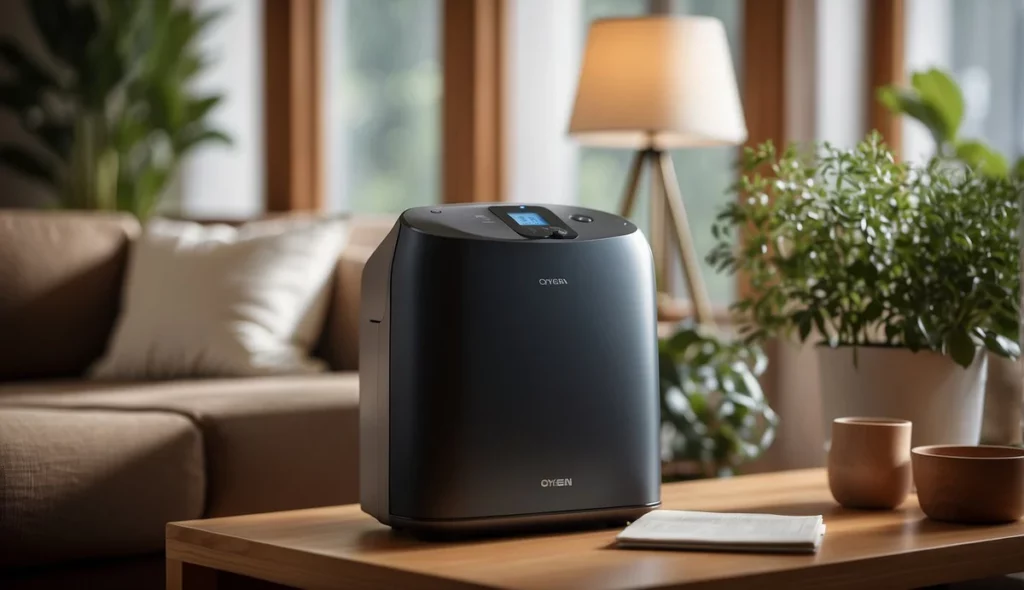Portable oxygen concentrators (POCs) are essential medical devices for thousands of Australians managing respiratory conditions. These compact, battery-powered units deliver concentrated oxygen to users while allowing them to maintain active, independent lifestyles.
The Australian market offers numerous POC options, with prices ranging from AUD 2,000 to AUD 8,000. This significant price variation reflects differences in features, capabilities, and brand reputation – making it crucial for potential buyers to understand the factors influencing costs.
This comprehensive price guide examines key elements affecting POC pricing in Australia:
- Device specifications and technology
- Brand reliability and reputation
- Battery life and power options
- Oxygen flow delivery methods
- Warranty coverage
- After-sales support

Understanding these cost factors helps individuals:
- Make informed purchasing decisions
- Balance medical requirements with budget constraints
- Identify value-for-money options
- Avoid unnecessary expenses on unsuitable models
For Australians requiring supplemental oxygen therapy, selecting the right POC represents a significant healthcare investment. This guide provides essential information to navigate the purchasing process while ensuring optimal health outcomes and financial value.
What is a Portable Oxygen Concentrator?
A portable oxygen concentrator (POC) is a medical device that draws in ambient air, removes nitrogen, and delivers concentrated oxygen to patients through a nasal cannula or mask. These compact devices utilise specialised filters and sieve beds to separate oxygen from other atmospheric gases, providing oxygen concentrations of up to 95%.
Portable oxygen concentrators price in Australia represent a significant medical investment, with prices ranging from AUD 2,000 to AUD 8,000. This substantial price variation reflects several key factors that influence the final cost:
Key Components and Operation:
- Compressor system for air intake
- Molecular sieve beds for gas separation
- Electronic controls for oxygen delivery
- Built-in battery power system
- Cooling mechanisms for stable operation
The rechargeable battery feature enables users to maintain their oxygen therapy while travelling, working, or engaging in daily activities. POCs eliminate the need for heavy oxygen tanks or being tethered to stationary oxygen concentrators, offering true mobility and independence.
Medical Applications:
- Chronic Obstructive Pulmonary Disease (COPD)
- Severe asthma management
- Sleep apnea supplementation
- Post-surgical recovery
- Altitude-related breathing difficulties
POCs deliver oxygen through two primary methods:
- Pulse dose delivery: Oxygen released in measured bursts when the user inhales
- Continuous flow: Steady stream of oxygen regardless of breathing pattern
These versatile devices adapt to various oxygen requirements, from 1-10 litres per minute, depending on the model and medical prescription. Modern POCs incorporate smart technology to adjust oxygen delivery based on activity levels and breathing patterns, ensuring optimal therapeutic benefits.
For those who require home oxygen therapy, devices like the Philips Everflo™ Oxygen Concentrator are available online. These machines are designed to be quiet and energy efficient, making them ideal for home use.

Price Range of Portable Oxygen Concentrators in Australia
1. Brand Reputation and Quality
- Premium manufacturers with established track records command higher prices
- Research-backed technology and proven reliability contribute to cost
- Industry-leading brands often incorporate advanced features
2. Size and Weight Specifications
- Compact, lightweight models typically cost more due to sophisticated engineering
- Larger units with higher oxygen output capacity sit at the upper price range
- Ultra-portable designs using premium materials increase manufacturing costs
3. Oxygen Delivery Methods
- Pulse dose systems (delivering oxygen when breathing in) start from AUD 2,000
- Continuous flow units cost more, generally starting at AUD 4,000
- Dual-mode devices offering both delivery options command premium prices
4. Battery and Power Features
- Extended battery life capabilities increase unit cost
- Multiple battery options and hot-swappable designs affect pricing
- Advanced power management systems add to the total cost
5. Intended Use and Specifications
- Basic home units start at the lower end of the price spectrum
- Travel-focused models with altitude compensation cost more
- Medical-grade units for specific conditions command higher prices
6. Support Services and Warranty
- Extended warranty packages influence the initial purchase price
- Comprehensive service agreements add to the base cost
- Technical support and maintenance programs factor into pricing
7. Additional Features
- Bluetooth connectivity and smartphone integration
- LCD displays and user-friendly interfaces
- Carrying cases and mobility accessories
- Built-in nebulisers or humidity controls
The selection of specific features and capabilities directly impacts the final cost, making it essential to identify which features align with individual medical requirements and lifestyle needs. Read more about capabilities at https://sites.rhodes.edu/academic-and-learning-resources/learning-tips/study-strategies-biology
The Role of Suppliers Like Air Liquide Healthcare in Pricing and Support
Air Liquide Healthcare has been a key player in Australia’s medical equipment supply sector since 1995. With 152 diagnostic and therapy service locations across the country, this established supplier delivers essential respiratory care services to tens of thousands of patients requiring home oxygen therapy.
How Air Liquide Healthcare Influences Portable Oxygen Concentrator Pricing
The company’s extensive network directly influences portable oxygen concentrator pricing through:
- Bulk purchasing power: Ability to negotiate competitive prices with manufacturers
- Direct distribution channels: Reduced intermediary costs
- Local service centres: Streamlined maintenance and support infrastructure
Quality Control Standards Affecting Pricing
Air Liquide Healthcare’s market presence extends beyond simple equipment supply. The organisation maintains strict quality control standards, affecting pricing through:
- Professional staff training programmes
- Comprehensive equipment testing protocols
- Regular maintenance schedules
- 24/7 technical support services
This commitment to quality assurance contributes to market pricing dynamics, as these essential support services are factored into equipment costs.
Read more at: EverFlo Oxygen Concentrator Australia
Global Integration for International Standards
The company’s integration with global operations – spanning 75 countries with 66,400 employees – enables access to international resources and expertise, ensuring Australian customers receive products meeting worldwide standards.
Standardised Pricing Structures Across Australia
Air Liquide Healthcare’s established relationships with manufacturers and healthcare providers create standardised pricing structures, helping stabilise costs across different regions of Australia. This standardisation benefits patients through consistent pricing and service quality, regardless of their location within the company’s extensive service network.
Other Respiratory Care Products Offered by Air Liquide Healthcare
In addition to portable oxygen concentrators, Air Liquide Healthcare also offers a wide range of other essential respiratory care products. Patients can find CPAP machines and CPAP masks suited to their needs. The company also provides specialized devices like the Aerobika with Manometer, designed for effective OPEP therapy.
Longevity and Maintenance Impact on Overall Cost Efficiency
A well-maintained portable oxygen concentrator can serve patients reliably for five to seven years, making the initial investment more cost-effective over time. The device’s longevity depends significantly on proper care and regular maintenance schedules. Click here to find more about maintenance.
Essential Maintenance Requirements:
- Filter cleaning every 1-2 weeks
- Professional servicing every 12 months
- Battery replacement every 2-3 years
- Internal component checks bi-annually
Regular maintenance helps prevent major mechanical failures and extends the POC’s operational life. While maintenance costs typically range from AUD 150-300 annually, these expenses are minimal compared to the cost of emergency repairs or premature replacement.
Long-term Value Indicators:
- Reduced frequency of repairs
- Consistent oxygen delivery performance
- Maintained energy efficiency
- Preserved battery life
- Sustained compliance with medical requirements
The durability of modern POCs contributes significantly to their long-term value proposition. High-quality units maintain their performance levels and reliability throughout their lifespan, ensuring consistent therapy delivery. This sustained performance translates to fewer disruptions in oxygen therapy and reduced need for backup equipment.
Proper maintenance records also positively impact resale value, though medical equipment resale must comply with Australian healthcare regulations. The combination of durability and maintained performance makes quality POCs a sound long-term investment for respiratory patients.
Consulting Healthcare Professionals Before Purchase
Medical professionals play a crucial role in selecting the right portable oxygen concentrator (POC). These healthcare experts assess individual oxygen requirements through specialised testing to determine:
- Precise oxygen flow rates needed
- Duration of daily oxygen therapy
- Activity levels and lifestyle requirements
- Medical condition progression and anticipated future needs
A respiratory specialist or general practitioner can provide a prescription detailing specific oxygen requirements. This prescription helps identify suitable POC models that deliver appropriate oxygen levels for each patient’s condition.
Professional medical guidance prevents costly mistakes in POC selection. Healthcare providers consider critical factors such as:
- Flow rate compatibility – Matching the device’s oxygen delivery to prescribed needs
- Usage patterns – Determining battery life requirements based on daily activities
- Physical capabilities – Assessing whether the patient can manage the device’s weight and controls
- Living situation – Evaluating home setup and travel requirements
Many Australian healthcare providers maintain relationships with reputable POC suppliers. These connections enable them to recommend devices that balance medical requirements with budget considerations. Some medical professionals can also facilitate trials of different POC models, allowing patients to test devices before making substantial financial commitments.
Healthcare providers often possess detailed knowledge about Medicare benefits, private health insurance coverage, and potential funding assistance programs that could reduce out-of-pocket expenses for POC purchases.
Conclusion
Choosing the right portable oxygen concentrator (POC) is an important healthcare decision. In Australia, there are many options available, ranging from AUD 2,000 to AUD 8,000, each with its own features and capabilities.
When selecting a POC, it’s important to take into account the following factors:
- Quality and Reliability – Investing in trusted brands ensures dependable oxygen delivery
- Portability Features – Weight, size, and battery life impact daily usability
- Support Services – Comprehensive warranty coverage and maintenance options protect the investment
- Medical Requirements – Device specifications must align with prescribed oxygen needs
Healthcare professionals can provide valuable guidance in this process. Their expertise can help identify POC models that offer the best therapeutic benefits while staying within budget.
By carefully considering these factors and seeking professional medical advice, you can choose a portable oxygen concentrator that meets your immediate oxygen needs and supports your long-term respiratory health goals.
